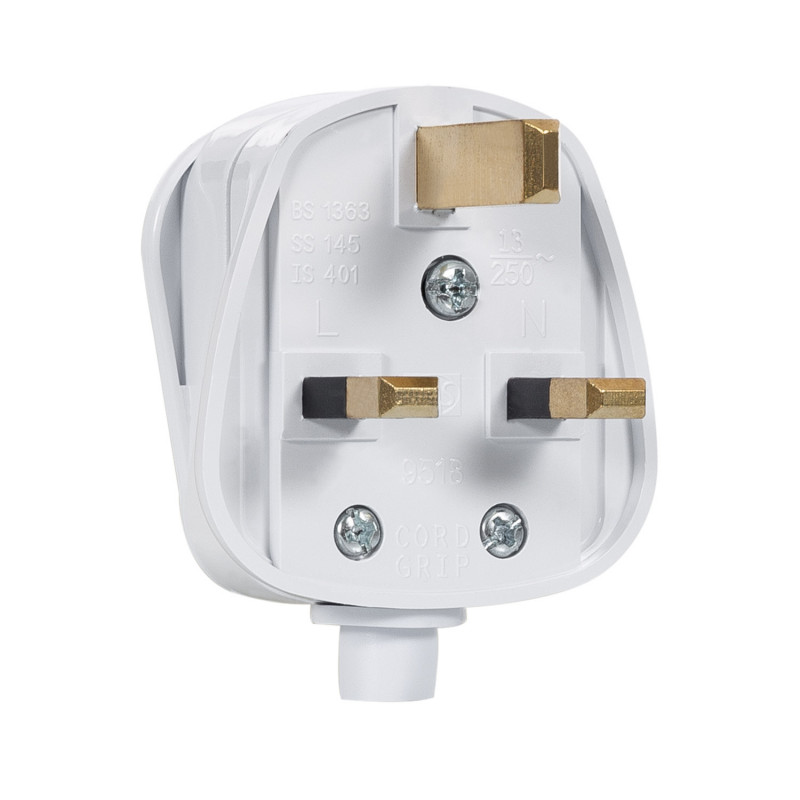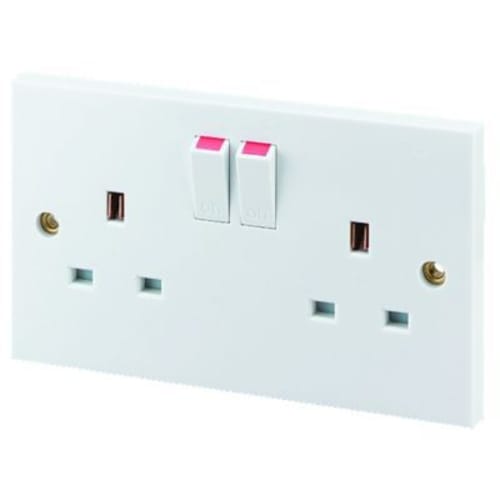For reasons not entirely clear to us, people seem fascinated by UK electrical plugs and sockets. Why are they so different, why are they over engineered? Why are they regarded as the safest in the world?
Let’s explain. Here is a picture of a typical UK plug:

Most items these days come with a moulded plug, for safety, and won’t have the screws.
As you can see, there are three (3) rectangular pins. Two are shorter, smaller and are ‘horizontal’ the other is bigger, longer and vertical. The top is the earth, the others live and neutral.
For some devices, an earth is not needed but the pin still has to be there. It may be plastic, but it still has a function.
Here is a typical UK electrical socket:

Actually, it’s a double socket. You can see holes that match all three pins, meaning there is only one way the plug can go in. You can’t get it wrong, not even upside down.
Here is the logic behind this design. It’s a very clever way of minimising the chances of a nasty shock.
As you put the plug in, the earth, being longer, goes in first. If you look hard at the smaller holes in the socket, you can see internal covers, a shutter. This protects small hands from sticking things in a getting a shock.
As the earth goes in, the shutter gets pushed down, opening the holes for live and neutral. That is why it is needed, even if it’s plastic.
The connections are deep inside the socket. The earth makes contact before the other two, a safety measure.
If you look at the plug, you will see two black bands. These are insulation. By the time the live and neutral make contact, any fingers holding the plug could only touch this, and that’s not likely anyway, so it’s another protection.
The three make a strong connection and the plug is not likely to fall out. It is pretty secure. Do not try to pull it out by the flex.
As you remove a plug, the shutter will close as the earth is the last to come right out.
Plugs are usually fused, up to 13 amps, depending on the device, to protect the flex.

Sockets usually have switches. In our picture, they are both on. This is to make it easy to completely isolate the device from the mains, without having to pull the plug out, saving wear and tear.
It’s a clever design and works well.
